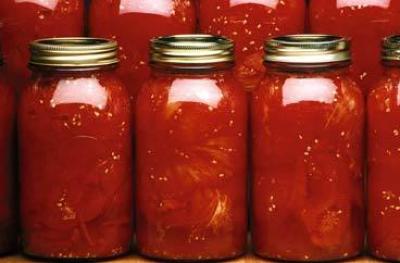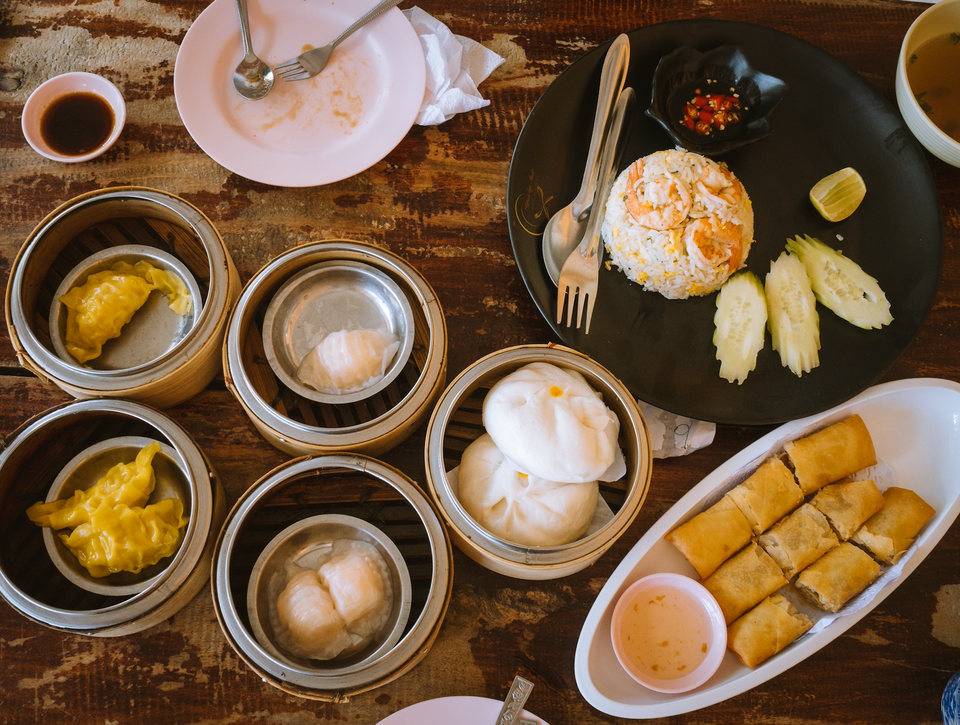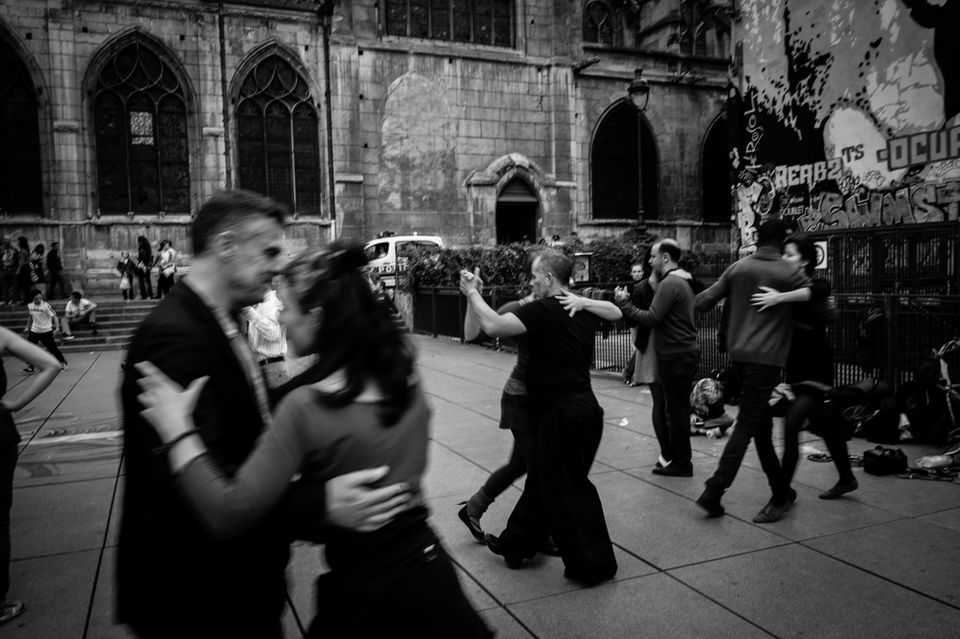I was trying to stay calm while holding a 20-quart water bath full of hot water that was starting to spill onto the kitchen floor. There was no place for the huge pot to go. There were other pots all over the oven. Sitting atop the range in various states of use were pots for scalding tomatoes, pots for scalding Mason jars, a pot to gently boil lids, and a container with the last bit of crushed tomatoes in it. I had started this step in the canning process too soon, out of order, and now there was no room on the counter for me to put this container of Herculean proportions I was trepidatiously balancing as trickles of hot water lapped over the edge and onto the floor. My wife stared at me quizzically, bewildered at the situation unfolding in our kitchen, and began clearing the oven range for the water bath. Watching with a half-smile of feigned patience on my face, I lunged for the oven range once it was cleared and stepped back as a cloud rose from over spilling water that hit a burner and began to steam. This chaos over which we hovered, the scalding, skinning, and crushing of tomatoes, the spilling water on the floor, the covering the range in layers of quickly staining tomato juice, was our trial by canning.
This was our first experience canning for preservation. It took us six hours for the first batch, three hours for the second. The apples we later spiced and preserved went even faster. We were clueless the first time, with that bushel basket of tomatoes. A few months prior, when we were first seeding our garden, we had made the decision to can our produce from our little backyard garden along with what we bought at the farmer’s market so that we would have enough tomatoes stored up to make it until next season. It was an adventure I had to get myself into, and my wife gracefully followed along. In our third year of gardening, I wanted to go the extra mile and can some food. It was something I knew nothing about but we are all supposed to have a collective remembrance of doing or enjoying: who has not enjoyed homemade jam? We constantly, almost every day, enjoy a food from a can. Yet, why did I not know how to put in what I so casually took out each day?
If I blame anyone else for this, it is Wendell Berry. I forget really how I first read his work, but he has either restored or ruined my daily experience of food, depending on how much one is willing to maintain certain levels of ignorance when it comes to how we are attached to food. The way we all have been getting our food has changed drastically in a brief span of fiftyish years. For someone like me, who has been alive for only half that period and making conscious decisions about purchasing food for only the few years I’ve been out of college, the loss of collective food history-the means of production from farm to market to home-has been overwhelming. What we were learning for ourselves just this autumn is an art that was commonplace for our grandparents, a time in reality not so long ago. Our trial by canning was a sudden reclamation of a way of life, a home economy. We were taking a small step toward filling our own pantry. We were acting together, celebrating our harvest by trying to make it last far into the next year.
But we had no idea what we were getting ourselves into, not knowing where to start. The only thing I was certain of was that canning food on your own (intoned the government pamphlets and various books) could lead to a full pantry of food that lasted into the springtime or a catalog of improperly handled cans that all contained clostridium botulinum, the wonderful bacteria that causes botulism and then death.
Canning is a project in which you truly learn the reality that everything dies. You are hands deep in the fruit of the harvest, the culmination of nature’s process of turning dirt into edible earth. You are learning the age old practice of cheating death through preservation, the simple act of boiling food and sealing to prevent spoiling. The thing is, cheating of death by preservation is to realize that death will occur and must be somehow confronted and accepted as an everyday reality. The grocery market world of red tomatoes in February is a simulation-not a reality. It is a show, a sleight of hand, a magic trick. The modern supermarket is a simulacrum of reality, showcasing a semblance of fresh, out of season vegetables and fruits in the middle of winter, catering to a mesmerized public that decides to carry on purchasing this fantastical produce, willfully ignoring that seasons, time, and death exist. To can is to enter back into the real, to humbly choose to live in a world of limits where time is allowed to act upon us all.
Eating locally, eating organic, growing your own food, canning: these are all actions that are both ethical economically and theologically. When we choose to limit ourselves in such a way, to no longer deny that life may spoil, fruit may over-ripen, or that harvests may come and go, we choose to live with the understanding that we can not delude ourselves any longer with cheap tricks and gimmicks of food purveyors, the clever marketing of multi-national distributors or the cutting edge science of industrial agriculture. We must admit to ourselves that we live in a world that is bold, dangerous, decaying, and beautiful beyond compare. To capture part of that chaotic grace in a Mason jar, to look each morning into the pantry and see tomatoes from our garden or apples we picked ourselves from local orchard is to connect all the dots of our existence from season to season, from sowing to reaping, from the darkness of dusk to the light of dawn, from life to death, from death to immortality.
In the can is an artifact of a time and place that is real to me, one that is not created for me by nutrition labels and marketing gimmicks. It is as real as the air I breathed or the sweat that beaded on my brow as I toiled in the care of small tomato plants that grew and gave us fruit out of the earth, an abundance we enjoyed throughout the summer and then canned and stored up in remembrance of the harvest we enjoyed. We enjoy the harvest still with each pasta meal or freshly made pizza, recapturing the bounty of late summer, though the weather has turned cold and bitter, and the earth has changed from green to stale yellow, and the tomato plants, void of any fruit or leaf, are bound together in a knot of decay on our compost pile. We enjoy with remembrance in each gazing look upon our harvest and in each bite of what we have known from soil to completion. We enjoy all the way until next spring, when we begin again our trials anew, knowing full well that we hover above the chaotic grace of an age old cycle that will repeat forevermore.




